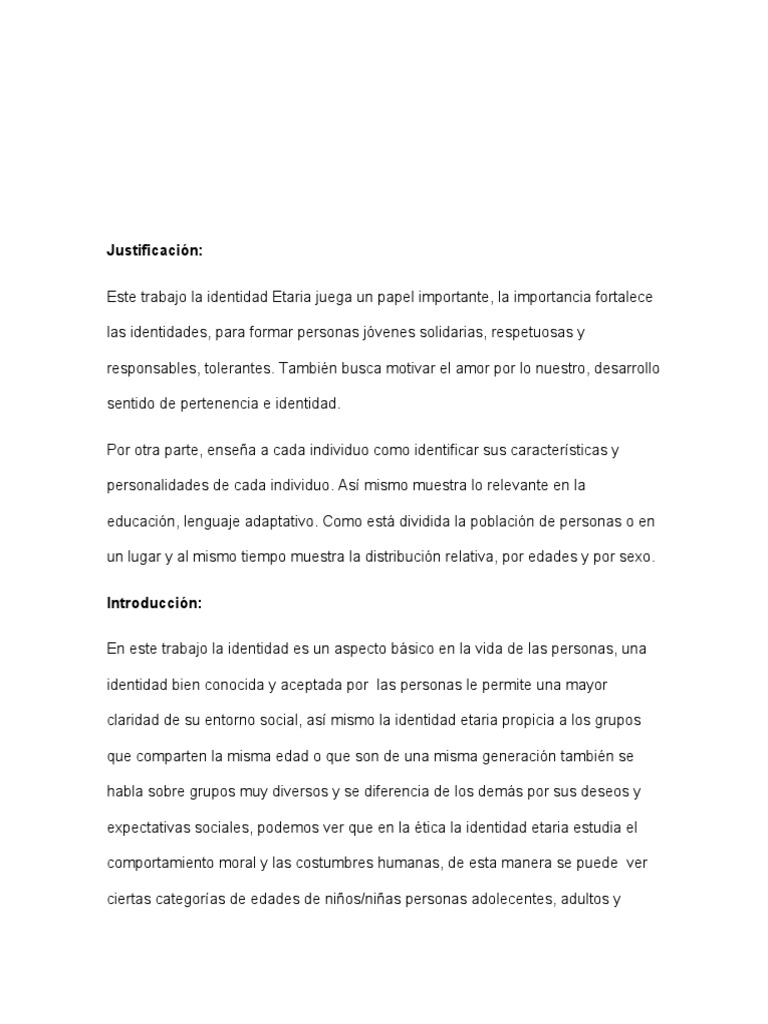Identidad etaria, or age identity, is an intricate concept that reflects how individuals perceive themselves based on their age, as well as how society categorizes them. This identity can profoundly influence a person’s experiences, behaviors, and social interactions. As society becomes more aware of the nuances surrounding age identity, a myriad of content types emerges, discussing various aspects of this multifaceted topic. This article examines the different content genres surrounding identidades etarias, catering to diverse audiences, to foster a comprehensive understanding of its implications.
Firstly, scholarly articles delve into the theoretical frameworks surrounding age identity. They often tackle topics such as the psychological implications of aging, ageism, and the sociocultural constructs that shape how age is perceived. Rigorous empirical studies may highlight findings on how different cohorts experience identity formation. These texts frequently explore the intersection of age with other identity dimensions, such as race, gender, and socio-economic status. Readers can expect a thorough literature review, methodology sections, and discussions of implications for policy and practice.
Another significant content type is the narrative format that includes personal essays or memoirs. These writings often recount individual experiences with age identity, presenting authentic narratives that evoke empathy and reflection. For instance, an individual nearing retirement may articulate feelings of loss and the societal expectations tied to aging. In contrast, a young adult might convey the pressures of youth culture and the quest for validation. In these narratives, readers can expect an exploration of emotional landscapes that accompany the aging journey, often punctuated by poignant anecdotes and life lessons.
Additionally, journalism plays a pivotal role in shaping public discourse on age identity. Articles in magazines and newspapers often cover contemporary issues related to aging, including health challenges, employment opportunities, and social engagement among different age groups. Journalists may investigate the implications of demographic shifts, such as an aging population, and how these changes impact various aspects of society. Compelling human interest stories illuminate the challenges and triumphs faced by individuals, showcasing resilience and the diverse experiences of aging. Readers can expect informative pieces that combine statistical insights with qualitative observations.
Digital content, including blogs and social media posts, has also burgeoned as a platform for discussing age identity. Bloggers often share personal reflections and analyses about growing older or navigating societal expectations. These platforms may feature commentary on age-related stereotypes perpetuated by media, ultimately aiming to dismantle preconceived notions. Social media campaigns often focus on promoting visibility and celebrating diversity across age groups, emphasizing the importance of inclusivity. Readers encounter bite-sized, compelling content that elicits immediate engagement while fostering community discussions.
Moreover, educational resources provide valuable insights for those seeking to understand the academic theories surrounding age identity. These may include infographics, eBooks, and online courses that present complex concepts in digestible formats. Universities and educational institutions often create courses that emphasize the socio-political implications of aging, examining policies impacting elder care or youth empowerment. By integrating age identity into the curriculum, educators aim to foster critical thinking about societal constructs. Readers can expect a wealth of structured information, from foundational theories to practical applications in various fields.
In contrast, artistic content—such as films, theater, and visual art—also vividly expresses themes of age identity. Movies and documentaries can depict the realities and fantasies associated with aging, offering nuanced portrayals of characters at different life stages. These artworks often challenge stereotypes and provoke thought regarding societal norms. For instance, a film might spotlight the joys and struggles of an elderly protagonist navigating modern society, while a documentary could emphasize the vibrant lives of senior citizens. Audiences are encouraged to engage with age identity narratives through the lens of creativity, prompting emotional responses and enhancing relatability.
Furthermore, workshops and seminars provide experiential learning opportunities focused on age identity. These gatherings often unite diverse individuals to discuss perceptions surrounding aging and its impact on personal and community experiences. Attendees may engage in activities designed to foster understanding and empathy, such as collaborative storytelling or role-playing scenarios. By encouraging dialogue across age groups, these initiatives aim to build intergenerational connections and challenge societal stigmas. Participants can anticipate dynamic exchanges and newfound perspectives on their own age identities.
Lastly, government and organization reports contribute essential data regarding aging populations and highlight areas necessitating attention. These reports typically analyze demographic trends, economic impacts, and the efficacy of social support systems tailored for varying age groups. As societies grapple with aging populations, this content type provides critical insights into planning for future needs, ensuring that policies are informed by accurate data. Readers can expect comprehensive statistics, detailed analyses, and actionable recommendations rooted in research findings.
In conclusion, “identidad etaria” encompasses a vast array of content reflecting the complexities surrounding age identity. From scholarly research to personal narratives, journalism to digital platforms, artistic expressions to educational resources, this multifaceted topic invites exploration and dialogue. By examining the varied lens through which age identity is presented, individuals can better comprehend its profound effects on personal and collective experiences. Ultimately, fostering an inclusive understanding of age identity can encourage a more equitable and compassionate society, where individuals are celebrated for their unique contributions, regardless of age.
